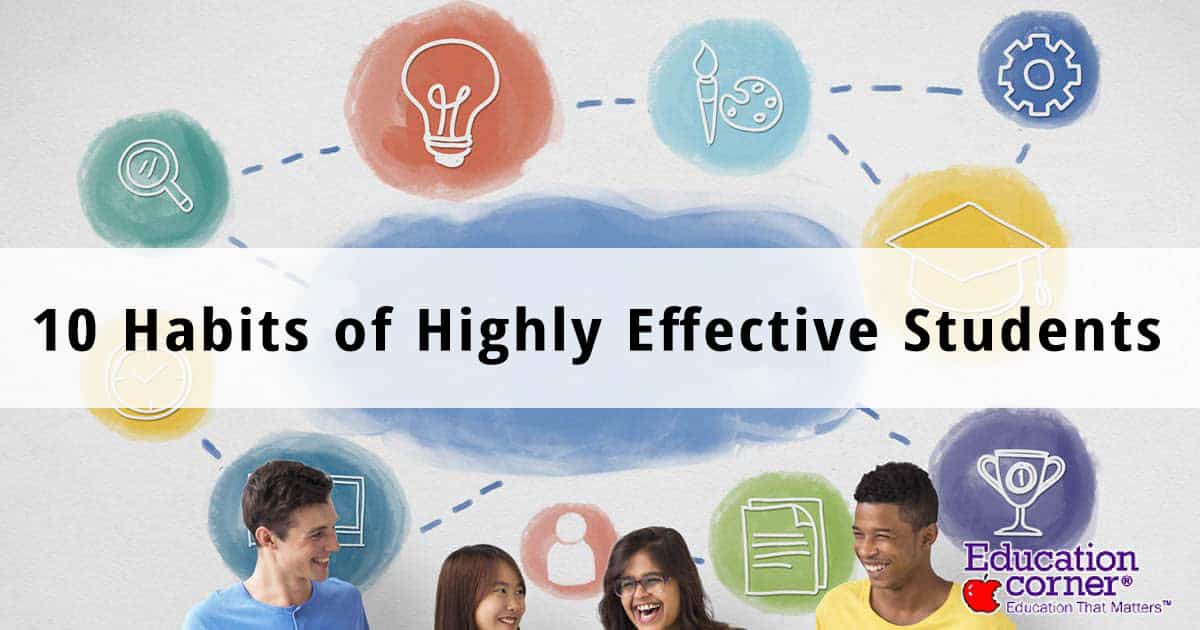Students’ lack of concentration is like a “learning epidemic” spreading on campus in the 21st century. Many teachers in primary and secondary schools become weaker and weaker as they teach, and students become less happy as they learn. As far as the impact is concerned, not only is the educational effect disproportionate to the investment, it may develop into a big crisis in the learning ability and creativity of the entire generation in the future…
Summary of key points of this article
- Changing Teaching to Recapture Students’ Attention
- Learning is best done in a good mood
- Adaptive teaching should be commensurate with ability
- 10 teaching methods to improve concentration
“Students are indeed becoming more and more difficult to guide every year. Teaching must use many methods to catch the students’ three souls and seven souls,” said Zhuang Tingyi, a teacher at Wenfu Elementary School in Kaohsiung City.
According to the concentration survey of “Parent-child World·Flip Education“ , more than 90% of primary and secondary school teachers believe that students lack concentration, and ” do not understand the content of the class “, “the way of teaching cannot attract students “, “the content of the class is too simple, They have all learned in cram schools or parenting classes ” are the three major reasons why teachers think students are not paying attention.
Concentration is the ability to control mental resources. Just as we train body muscle strength and control, mental control also requires a lot of step-by-step focus experience or practice
Lain Yuen, an associate professor of the Department of Psychology at National Taiwan University, emphasized that passivity, too difficult or too simple challenges, too much sound and light stimulation or emotions are not conducive to children’s concentration experience.

Changing Teaching to Recapture Students’ Attention
Adults often ask, “Why don’t our children pay attention?” But the German psychologist Wolfgang. Bergman pointed out that this is not really the core of the question, the question should be: ” Why are there so few things and topics that they are interested in? “
Bergman analyzed that children live in a state of overstimulation when they are young and vigorous, making it difficult for them to choose and set priorities. Another key reason has to do with schooling, because most schools follow a tiring, exhausting model of education.
In this great era that is not conducive to concentration, the change and refinement of teachers’ teaching methods will be an important key to improving students’ attention. The teaching ability of “recovering concentration” should be an important topic of teaching reform, and it is also a challenge that the teaching field faces all the time .
Learning is best done in a good mood
How to let children focus on learning? The International Association for the Education of Children has found from many studies that if teachers can create a learning environment and atmosphere for children without fear and excessive pressure, let children experience active and meaningful learning, and provide students with challenges commensurate with their abilities, give children accurate, Instant feedback, these are the most important keys to regain students’ concentration.
Creating a positive and fun learning environment is the prerequisite for effective teaching. “Learning is best done in a good mood,” says Umm psychiatrist Manfred. Shibi book pointed out.
For example, a German elementary school class was asked to solve complex arithmetic exercises. After half an hour, half of the students could go to the next classroom to have fun, while the rest continued to think. After 30 minutes, the first group of students came back in a good mood and relaxed. Although it took a lot of time, they came from behind.
In the book “Focus”, the “chemical principle of happiness” that occurs in the brain is fully explained. When people feel happy, they secrete dopamine, a substance that transmits positive emotions. Dopamine drives us to do things that make us feel happy.
The brain rewards itself. If the brain solves something, it puts itself in a good mood and stores it away. If learning is too easy, or the skills you possess are constantly challenged, the release of dopamine and concentration will be relatively reduced.
Relying on a calm mind alone cannot strengthen learning motivation. On the contrary, whoever is highly motivated, with the joy of anticipation or positive expectation, his brain will be strengthened more obviously through the body’s own reward system, and than through Extrinsic stimuli, such as chocolate or pocket money, were even stronger .
Adaptive teaching should be commensurate with ability
“Fun and interesting” teaching does not mean fancy performances without connotation, or completely stress-free learning. In the “Parent-Child World·Flip Education” survey on primary and secondary school students’ fun, only “challenged” children think that class is “fun”. Therefore, teaching content that is too simple is like teaching that is too difficult and boring, which can quickly kill children. focus.
Lian Yunwen pointed out: “Adaptive education is very important for the cultivation of children’s concentration. Challenges commensurate with children’s abilities can improve children’s motivation and opportunities to take the initiative to control problems, and then have the opportunity to experience initiative, concentration and a sense of accomplishment (or satisfaction) ).”
“A good education should allow each child to have challenges and opportunities to exercise concentration. The teacher’s profession lies in judging and creating such opportunities. This kind of experience will encourage children to learn actively, just like people who like mountaineering. After a successful summit, you will want to climb another higher mountain, that is the instinct of the brain.”
10 teaching methods to improve concentration
Studies on the brain have found that if students can use multiple senses at the same time, it will help them concentrate on learning. The concentration survey conducted by “Parent-Child World·Flip Education” also confirmed that students feel that the teaching methods of games and drama, multimedia teaching, outdoor teaching and hands-on activities are the most concentrating methods in class.
In the survey, teachers also responded to various “interactive” and “diversified” teaching methods, which help students concentrate. The following are 10 commonly used teaching methods, which can be used flexibly in the same course or even in the same class.
1. DIY
Zhuang Tingjie, a nature teacher at Wenfu Elementary School in Kaohsiung City, participated in a study on concentration by the National Science Council and found that “Generally, traditional teaching methods can only attract students’ attention for 15 minutes, but “hands-on” can be longer. “And “hands-on” is one of her various teaching methods, which makes students most enthusiastic.
In Zhuang Tingjie’s “School with Beethoven” course, students learn by doing, and also won the GreatTeach 2008 National Creative Teaching Excellence. “Once I heard a school worker play the “Taihu Boat” with a pipe, it gave me a good teaching design inspiration,” Zhuang Tingyi said. Beethoven”.
Zhuang Tingge first aroused students’ learning motivation and curiosity with self-made musical instruments, and taught the principles of sound. Then invite workers to come to the classroom to give a “creative musical instrument master” concert that will open up the students’ senses. Then let the students discuss in groups, teamwork to develop and create musical instruments, conduct hands-on teaching courses, and perform presentations.
Before the end of the ten lessons of “Beethoven in School”, she used the picture book story “The Piper in Colorful Clothes” to guide students to think, “Are there any situations in daily life where animals can hear but humans can’t?”, “Is it possible that children can hear but adults can’t hear? Why?” and use this as an alternative assessment for this teaching unit.
2. Games
A school fair can be like a lively market, or it can be a science education game, such as the “Science Fair” held in March 2015 at Taichung High School, which is still unforgettable for teachers and students.
The teacher team in the field of upward nature first cooperated with the student association to compile the scientific knowledge in the classroom into a mysterious plot story “3 mysterious packages” for the “rewarded answer”, which successfully stirred up the campus science fever.
Then, the class needs to make a short video to market their own science-themed games. “They must first understand the scientific principles, and then explain it in a simple way, so as to arouse the interest of other students to break through the level.” Biology teacher Chen Runling said happily, seeing in the game The “initiative” of students in exploring scientific knowledge.
3. Drama Teaching
“Ocean Come to Play” is a school-based curriculum developed by the small art team of Sanminguo, which has been in progress for more than 7 years.
The lower grades set up a puppet house, pretend to be a house and drink simple dialogues, the middle grades learn to make glove puppets, learn soundtracks, and practice dialogues adapted from picture books, the fifth grades learn to make stick puppets, make up or adapt stories, and the sixth grades use class topics Screenwriting, the climax of the course ends with a drama performance.
“Students look forward to what they can do and what they can do when they know what grade they are in,” said Yuan Chunrong, an art teacher. Moreover, some children are usually lazy and careless, but they are meticulous in acting. They have the opportunity to rewrite other people’s perceptions of His impression, getting affirmation and praise also made him more willing to invest in other efforts.
4. Using multimedia such as images and videos
“Students’ attention is distracted by too many things now, and more exciting classes are needed to attract their attention.” Shi Qiting, an associate professor of the Department of Physics at Tunghai University, said that the use of multimedia materials makes students take his classes with great enthusiasm.
When it comes to “Newton’s Second Law of Motion”, Shi Qiting will compare the differences between the comic version and the movie version of “Spider-Man”, and use the laws of physics to explain why in the comic version, Spider-Man shoots silk to save the heroine who fell on the bridge, but instead causes The heroine died from a broken neck; in the movie version, Spider-Man jumped over and hugged the heroine, without the gravitational impact of the comic version, so the rescue was successful.
Su Lihua, a Chinese language teacher in Meishan, Chiayi County, also uses videos to assist her teaching. For example, when she took the class “Cambridge I Know”, she first played “April on Earth” for 10 minutes, allowing students to have a more specific imagination of Xu Zhimo’s character and the people around him, and then explain why his words are passionate and dense of.
For some adjectives in the text, such as “Mo Leng Leng”, ask students to try to draw the picture. She said that the students became interested in this person and this place, so the long text went smoothly.
5. Outdoor teaching
Nature is the most attractive and the best teacher for children. Quchi Elementary School in New Taipei City, which is very close to the natural environment, regards nature as another classroom system. They have to learn to measure the flow rate of the stream in math class or nature class. The children tie the bottle with a rope and go to the Xindian stream near the school to measure.
The school also gave up a classroom for students to draw pictures, and the toilet door was also removed for students to draw, expressing the experience through art. The course has been going on for more than a year. Lu Gangkan, director of the Guangxing branch of Quchi Elementary School, said that the last thing students want to hear is: “You don’t have to come to class tomorrow.”
6. Self-directed learning
“If a child is interested in himself, he will definitely focus on it,” said Sun Huiling, the academic director of Yong’an Elementary School in Taipei City. Wing On conducted a curriculum evaluation survey last year and found that planning flexible courses as “clear water time” for students to study independently is more popular among middle and senior students than general subject courses.
The children of Wing On have two consecutive sessions of “Clear Water Time” every other week. From the selection of research topics, methods, progress, results and sharing, it is all up to the children according to their own interests and abilities. What the teacher does is to guide them from the side. , “When children publish and share, there are often reports that surprise us. Children’s independent learning ability is better than our adults expected.”
7. read
Reading is the most mind-boosting of all cognitive acts and the foundation of all learning and understanding. Cognitive experts believe that any method that can promote reading can improve children’s concentration.
Chulai Elementary School in Taitung City promotes reading every day through morning activities such as storytelling, reading, class reading, and English picture book reading. Over the past six years, Principal Li Zhiguo has observed that the children are now less restless, more able to sit still, and perform better in rules and living habits. Effect.
8. Make teaching materials live
In Jian Sulan’s Chinese class at Beishi Shijian Middle School, all students will hear and see are ready-made textbooks. News headlines, advertisements, proverbs, popular lyrics, signboards, TV quotes, program titles, event themes, wedding invitations, invitations, MRT poems, campaign slogans, all of which are attractive to children.
Jane Sulan said that advertising is very useful. To teach metaphors, Chinese tofu’s “female heart, tofu heart” can be used; to teach contrast, take the watch advertisement “don’t care about eternity, only care about what you once owned”; to teach exaggeration, Ford Motor’s “Wind direction is up to you” it suits well.
Another example is that the principle of creating characters in Liushu is an indispensable cultural knowledge, but it is difficult for modern children to understand. She uses traffic signs and folk characters to assist learning, such as using the sign “No Cars Entering” to “point things out”, Use “recruiting wealth and treasure” to “understand”.
9. Use movement to maintain stillness
Recent research abroad has found that, contrary to common belief, children learn better when they don’t have to sit still. In order to improve students’ concentration, some elementary schools in the United States have implemented an experimental program of integrating physical activities into the teaching curriculum. There are also schools in Canada that require children to practice Brain Gym (Brain Gym), and there are also “active schools” in Germany.
Letting children learn English through interesting physical teaching activities is one of the signature teaching methods of Zhu Miaozhen, a teacher at Delong Elementary School in Taoyuan County.
For example, “ABC Alphabet Aerobics”, which won the award in the English Teaching Plan Design Competition of the Citi English Teaching Seed Fund this year, is an interesting gymnastics invented by Zhu Miaozhen according to the sounds and shapes of letters. A big belly, “H” is for climbing stairs, “N” is for slippery slides, and “P” is for slapping ass. “Whether it is a disadvantaged student who is new to English or a child who has studied in a cram school before, they can all learn happily together.”
10. Meditation and self-awareness
Too much stress and tension can easily cause the brain to shut down; relaxation can help you focus and think. Some studies have pointed out that hypnosis, meditation, yoga, meditation, etc., can bring unexpected effects of concentration.
A domestic study on “The Effects of Meditation on the Emotional Intelligence of Elementary School Children” showed that 83% of elementary school students believe that meditation can improve their grades, become smarter, happy, energetic, and easy to fall asleep, and 70% of the students said that meditation Calm down your mood and speed up your learning.
Lu Meijuan, a math teacher at Xihu Junior High School in Beishi, often takes her children to sit quietly when she first accepts a class, or when she feels that the students are restless.




